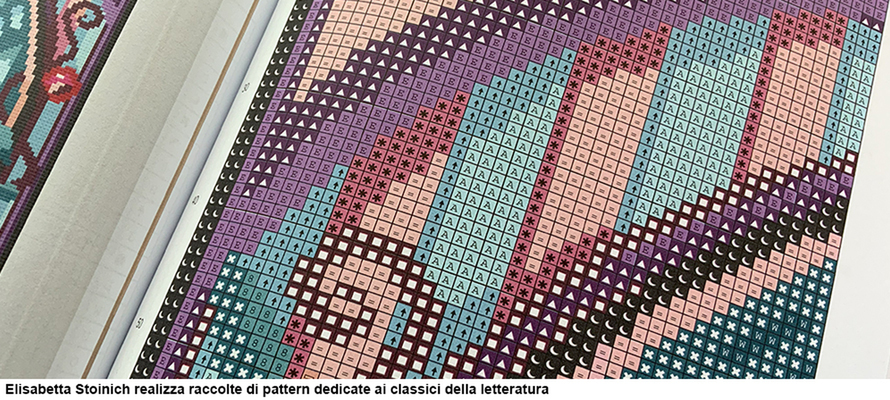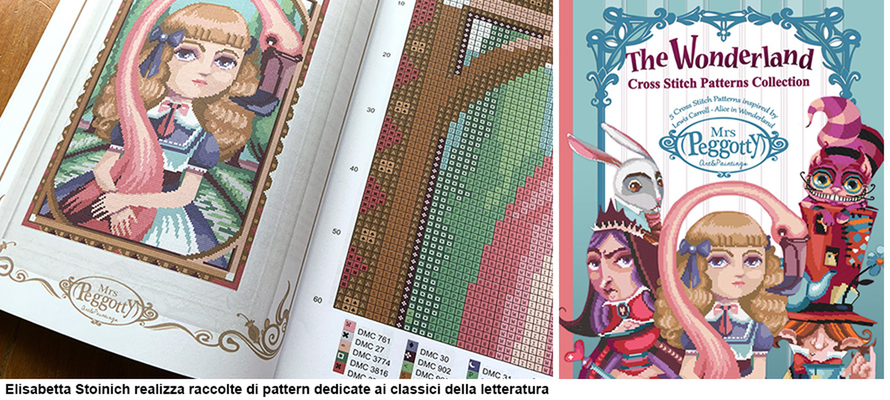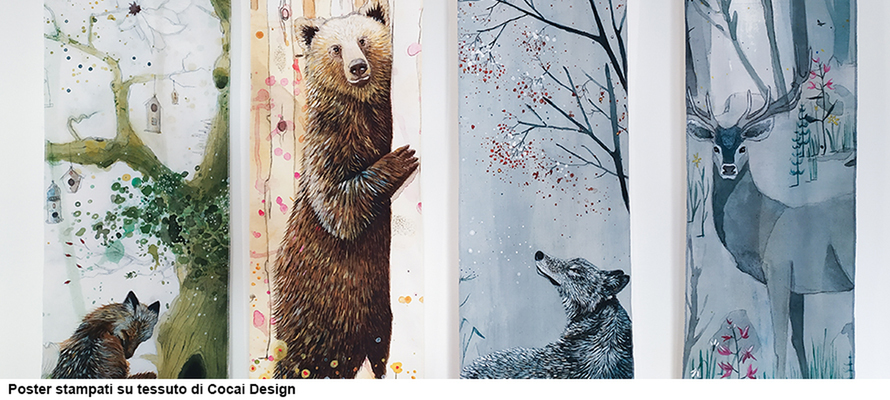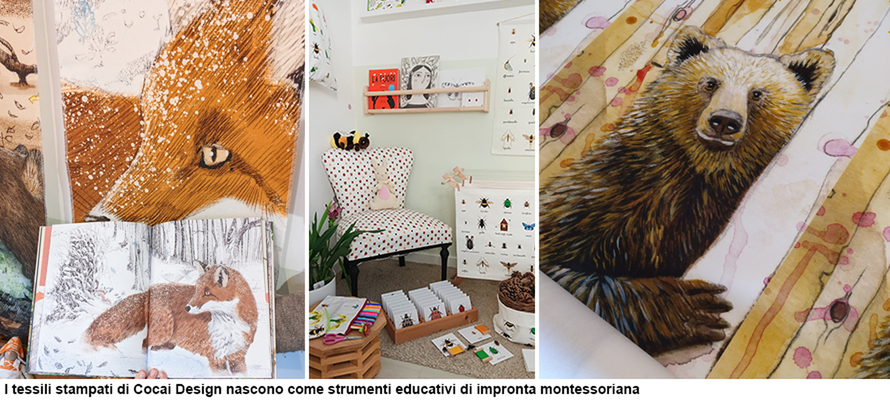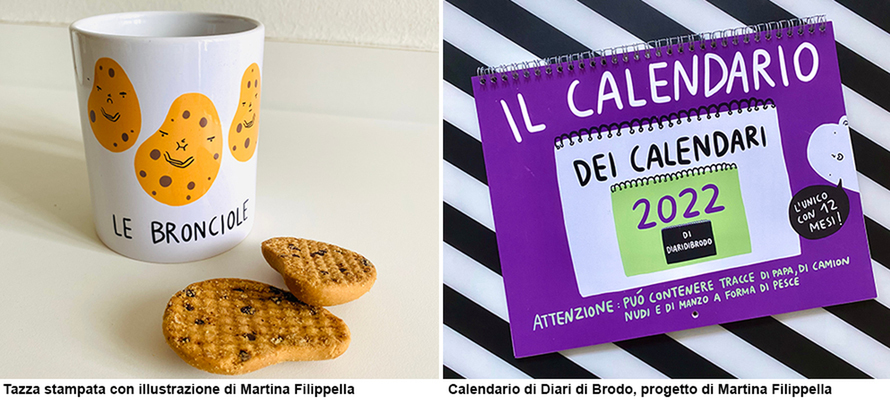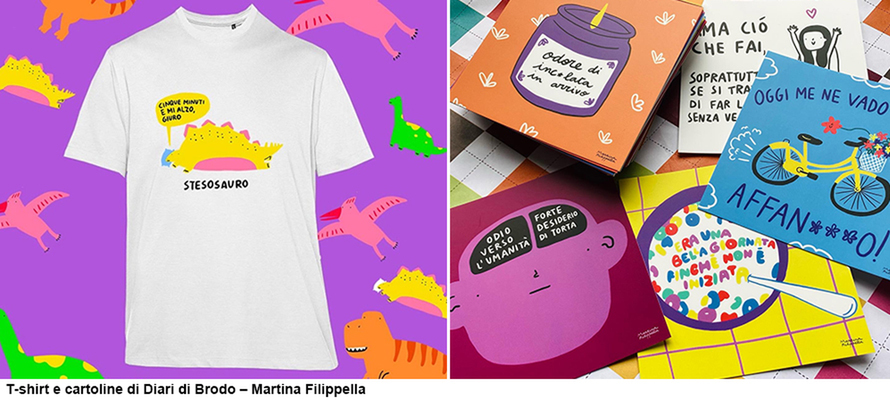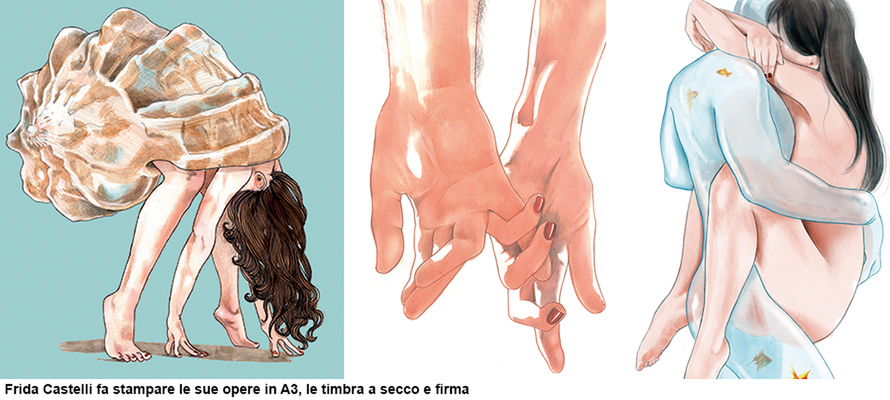Print on demand: short runs for big ideas
If web-to-print was a novelty ten years ago, now that much of the printing work is done via remote communication and automation, what has changed for this model? Unquestionably, a space has opened up for small creative businesses to reach new distribution channels and realise economically and environmentally sustainable projects. We discussed this with Berndt Zipper, CEO of Zipcon and expert in the e-business print sector, with Martina Filippella, Elisabetta Stoinich and Frida Castelli, illustrators, and Cocai Design, independent publisher.
By Roberta Ragona | On PRINTlovers 101
Print-on-demand and dropshipping are no longer a minor segment of the print market: in 2022, its global value was over €5 billion, with projected growth over 2022-2032 of 26.2% per year. The main driver is consumer demand: as costs and waiting times decrease, more and more people have started to buy products that reflect their interests, passions and cultural consumption, no matter how niche. In particular, textiles are driving growth, with clothing and accessories for the home and the person. The home area is the fastest growing: according to Market Decipher, it will increase by 27.7% between 2022 and 2032.
On the technological side, the adoption of printing presses with UV-cured inks has expanded the number of manufacturers able to offer these services. Digital printing is the medium of choice, with the sublimation segment absorbing much of the demand for non-paper substrates in 2021. We asked Berndt Zipper, CEO of Zipcon and expert in e-business print and web-to-print, to help us read the changes in the last few years: "The main difference is the level of automation. Processes are fully integrated; for most B2C commercial print products, the level of automation reaches 80 per cent, and in some cases - such as business card production - up to 100 per cent: printing, cutting, packaging and logistics to the end customer, with significant savings in person-hours. Hours that are used more effectively in processes that instead require the experience and expertise of printers.”
A significant growth curve, Zipper continues: "The penetration of online printing before 2020 stood at 36 per cent of the European market; right now, we are at 42 per cent. This change affects the sector as a whole. It affects all areas of printing, from large format to publishing to textiles, but the methods with which companies are dealing with it are very varied: the big players have set up their entire supply chain, while smaller companies or those specialising in specific areas can become part of printing networks that bring together different companies and offer a range of services to the customer. The level of quality is such that for consumer printing, this type of automation will be the norm, while printers' expertise will focus on high-end printing products.”
The quality of the end product is a pivotal aspect, especially when combining print-on-demand and dropshipping: "Here, too, there are different methods. On the one hand, there is dropshipping, where the platform only generates the order, but another supplier prints it. This is a widespread service for products bought via social channels, such as t-shirts, mugs, and gifts. It is an opportunity for small manufacturers to reach more customers by being part of an international network. For the network, the advantage is that it offers a wide range of media and printing techniques. It is imperative to work on the quality of suppliers to ensure that customers receive the same print grade, media and delivery times worldwide. To become part of this kind of production network, you have to deal with a verification process: prove what kind of machines are used in your plant, what kind of colour management is integrated into your processes, what paper or other media you are equipped to handle, as well as having proven quality standards of shipping and logistics. All this works for consumer printing: personal attention is still required for high-end printed products. This will probably be where the addition of artificial intelligence, the use of augmented reality and other tools to simplify remote digital proofing will take the technology forward, but it is not yet state of the art.”
If this is the scenario for printers, what do these possibilities mean for those involved in visual communication, illustration, design or publishing? For Martina Filippella, an illustrator with collaborations with Italian and international brands such as Vanity Fair, Vans and the Economist, and the mastermind behind the Diari di Brodo project, relying on a company specialising in integrated print-on-demand has meant being able to focus on the fundamental aspect of her work, which is drawing: "Before Diari di Brodo, I had tried printing some illustrations through services where artists upload their graphics to the marketplace and customers buy them printed on demand on different media.”
“That type of platform, however, has two problems: inconsistent print quality and a royalty system that doesn’t match the communication work it requires. I later worked with an on-demand printing company in my area. I had more control over the printing, but as the orders started to increase, it became difficult for one person to take care of everything: picking up the orders, shipping, dealing with any delivery problems and in the meantime designing, getting new ideas and working on illustrations for brands and editorial collaborations. The work with the current supplier has been decisive: they not only offer the possibility of producing products on demand in various media and techniques - embroidery, digital prints, screen printing, sublimation - but also take care of the website, online shop, shipping and customer service. This means that I can devote more time to creative work."
In this way, personal productions become a laboratory of ideas and techniques: "I consider Diari di Brodo as a workshop of ideas, both digital and handmade. I can also experiment by winking at potential customers. The possibility of creating products professionally but in short runs helps experimentation, and this way, when we start a collaboration, they come to me with much clearer ideas regarding what we can do together and what they can expect."
Those who appreciate her illustrations - not only on social channels - are mainly her followers, who follow her for her humour and surreal approach to the difficulties of everyday life: "People who buy my products also do so because in what I draw they see something of themselves, something they want to tell by wearing a t-shirt or bringing into everyday life. It's something about the relationship with others; in fact, another thing I produce via print-on-demand is small format prints, which you can't find on the website but only in person at the events I attend during the year. I like the idea of offering something that can only be purchased physically because it leads people to getting to know me through channels that are not exclusively digital."
It was precisely the relationship between digital channels and physical products that convinced Elisabetta Stoinich - an illustrator with lengthy experience in the publishing sector with De Agostini, Zanichelli, Sperling and Kupfer, Mondadori and many others - to use the publishing service of a well-known global e-commerce business to gather her patterns dedicated to literary classics in a volume: "I have been working as an illustrator since 2005, and since 2013 I have been running a shop on Etsy dedicated to my projects and self-productions, whose main products are currently available in a digital download. A few years ago, I worked on a Sherlock Holmes-themed box with The Black Needle Society - a subscription box dedicated to embroidery and cross-stitch enthusiasts. It contained a Conan Doyle story, cross-stitch patterns inspired by his characters, and the set of threads to make them. This collaboration gave me the idea of a book that would bundle my patterns dedicated to the classics: the result is a volume of 80 pages. The choice of the service is linked to several factors: the possibility of reaching a wide audience, not just people used to buying from small designers, and the fact that I can concentrate on design and communication without dealing with printing, warehousing, inventory and logistics. Also, there are no start-up costs for printing or creating the ad; they are deducted from sales, so the main investment is time spent on design and communication, which makes it a much more affordable entry point. However, it should be remembered that this tool was created with text-only books in mind and then adapted to illustrated products. For example, endless content is dedicated to people passionate about bullet journaling and planning or colouring books for adults and children. The important thing is to be clear about what kind of product you are proposing: the maximum page weight available at the moment is 90 grammes, so I have chosen not to offer my colouring pages through this service because a segment of the colouring page audience treats it as a real artistic activity, using watercolours or alcohol markers: these are techniques that need paper with a certain structure. On the other hand, a volume of embroidery patterns should, above all, guide those who work in the construction of the image, but embroidery threads have codes - a bit like a Pantone swatch - so the colour code standard guarantees the fidelity of the result.”
In the case of Frida Castelli, a Milan-based artist with a global audience, printing on demand provided the tool to make art prints that could also reach markets where it would have been complex to get to, as her editor, the founder of Moorigo Studio, tells us: “Frida's artistic journey began by using Instagram as a kind of diary for images, a work of self-fiction through illustrations. When she started publishing in 2016, we initially turned to a local printer, but the results were unsatisfactory. There was a problem of lack of understanding: for a company accustomed to large corporate print runs, a client who needed a few copies at a time but of high quality and with constant sales over time was not an exciting contact. We then turned to one of the first companies in Italy to offer print-on-demand with a high level of quality at affordable prices. Being able to order short runs meant we did not have to deal with storage, warehousing and inventory costs and saved 50-60% on out-of-pocket costs. We also use their services for customised outsize printing or printing on non-paper substrates, such as forex or other large-format materials.”
“As for books, we recently decided to rely on the same provider Stoinich mentions: using a service that prints from the supplier closest to the recipient solves many logistics and shipping problems that are prohibitively expensive for a small independent company. For example, Frida has a lot of followers in Brazil, but sales do not match these because the shipping and customs costs are so high that they discourage buying. This aspect is even more significant for our latest work. This special large-format volume collects Frida Castelli's first three books - Love is the Devil, Dear X, and Hotel Rooms - plus a new chapter with her most recent works, all enriched with interviews, sketches, illustrations and other unpublished material for a total of 400 pages.”
“On top of that, the possibility of the parcel getting lost or arriving damaged is higher for shipments over such long distances. This is also the reason why Frida has always dedicated herself just to books and A3 prints because the costs of logistics and packaging for smaller objects would not have made sense in terms of the economic return of her artistic work: the public is used to the big distribution players, who can offer free shipping for high volumes, whereas, for a small independent producer, shipping costs are a significant factor. Logistics also condition the type of artistic product you choose to offer and on which substrate.”
One of the fastest-growing segments is print-on-demand for textiles. This evolution has opened up experimentation in areas where the barrier to entry was high, allowing hybrid models to be explored around a strong idea or a recognisable authorial voice. This is the role played by on-demand printing services on fabric for Cocai Design, a publishing house whose book Fallen. La seconda vita degli alberi (Fallen. The Second Life of Trees) has just received a Special Mention in the Bologna Children’s Book Fair competition, among over 3,500 competing books. Valentina Gottardi, founder of the project with Maciej Michno, tells us: "We started 15 years ago as a creative studio and web agency and have often worked alongside visual communication in museum set-ups and educational design with a method of working that combines interactive online and offline, print and digital content. With Cocai Design, we began by working on the Montessori nomenclature, a teaching method based on classifying and grouping objects into categories using concrete materials that children can manipulate. We focused on the theme of nature and created a box with a set of cards alongside posters printed on fabric. The fabric support has a softness and manipulability that makes it more resistant to interactions with children and easier to take to settings such as the school in the woods: it is easy to transport, set up and take down and can be washed easily after a day's use. Coming from work on museum-based teaching led us to think about the materials that should be 'child-proof', but also about the visual impact of the displays, from which came the inspiration for our illustrated drapes, large-format prints on cotton canvas almost two metres high.”
“The meeting with our supplier came during a workshop where we created a memory printed on fabric together. Having low order minimums - the minimum order is one metre - allows us to keep the attention to detail high and do some testing. Also, because we are working with the independent bookshop circuit, it makes sense for them to be able to order fabric posters linked to educational material with low order minimums and see what the customers' reaction is.” Finally, sustainability is not secondary: “Producing only what you need is a way to reduce the use of materials, water and energy. When they improved their offering with new printing presses that use even less water, what struck us was the support of their prepress department in recalibrating our fabric prints with the new machines. It is a level of attention that can do a lot to put a small independent company in a position to grow and imagine bigger and bigger projects.”
It is an opportunity for small manufacturers to reach a larger number of customers by being part of an international network.
